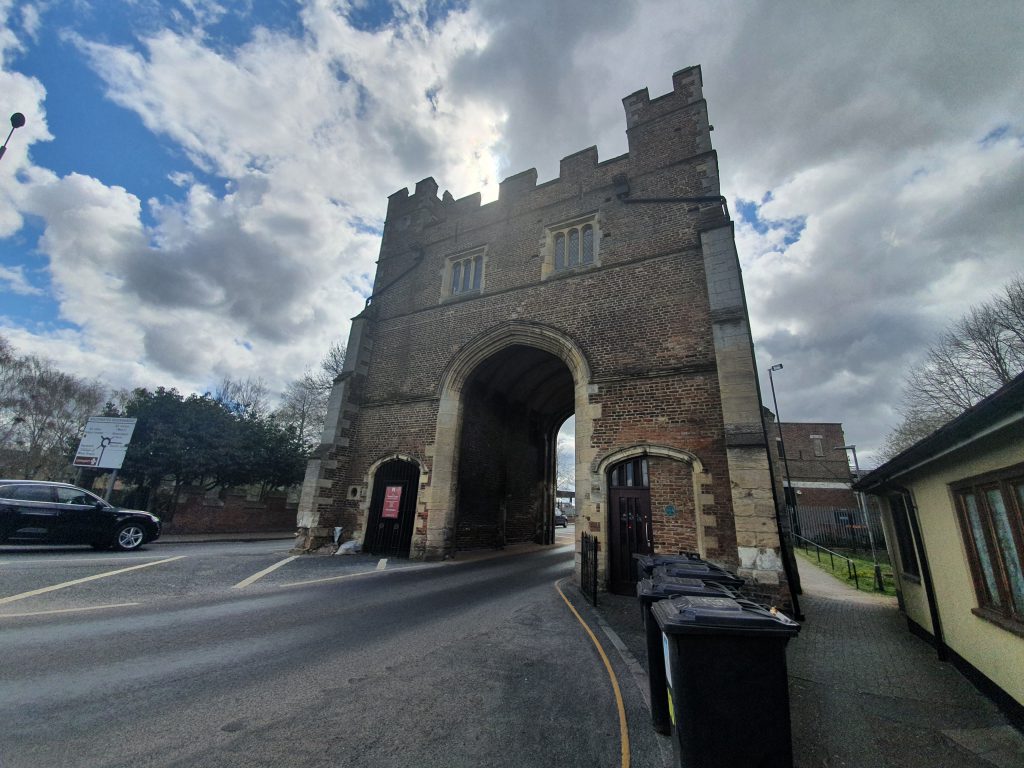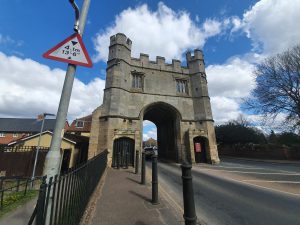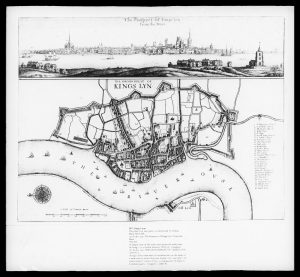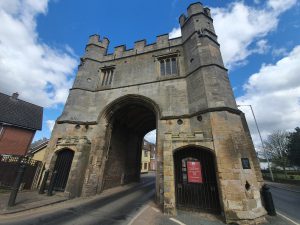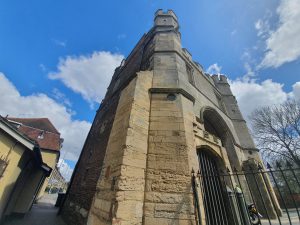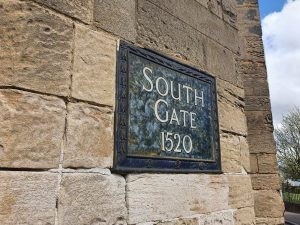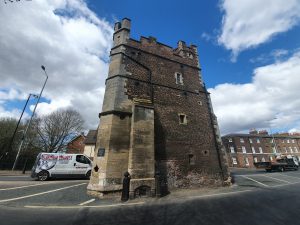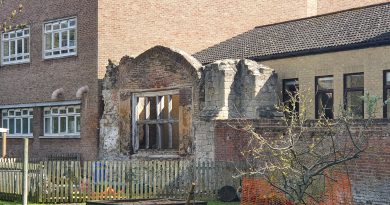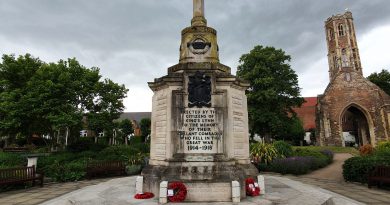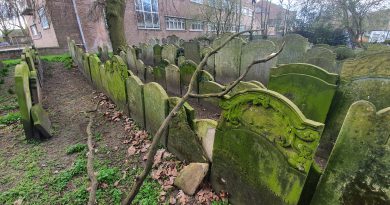King’s Lynn – South Gate
I’ve been under this archway many times, but I’m not sure that I’ve ever walked down to have a closer look. King’s Lynn’s South Gate, which is Grade I listed, was first constructed in 1437 by Robert Hertanger as part of the town defences, although it also served as a useful way of tolling anything that came into Lynn. The structure is built in brick with a stone facade and the two pedestrian walkways weren’t knocked through until 1817 (the eastern chamber) and 1841 (the western chamber, which also saw the western staircase being removed). Since then, the two walkways have now been closed off and since 1899, traffic only now goes one way through the gate as another lane was added to the side.
The South Gate is at the top-right of this map (click on the image to make it larger), marked number 11, and shows that there was a different road system at the time. At this time, there was no London Road (that was constructed between 1800 and 1804), and the main access point was down Southgate Street and Friars Street, which is now gated off to prevent modern day motorists using it as a rat run.
I managed to stand in the middle of the road (well, sort of, most drivers notice that there is a big gateway in the way, so tend to focus their minds here) to get this photo of the gate, which I thought was rather brave of me. The room above the gate was used by the gatekeeper from the early seventeenth century, and likely before, and was long used as a private residence. There were plans to build a drawbridge in front of the gate early on during the Civil War, but this was never constructed. King’s Lynn was besieged in 1643, but the gate remained undamaged during the period of trouble which the town had. The role of gatekeeper was abolished in 1741, with the tolls having already been removed in 1721. The wooden gates were removed in 1795 when the threat of attack seemed remote.
The west side of the gate and this fifteenth century structure was located on the same site as an earlier medieval gate, with the footings of that remaining today. Although the design makes it look like there was a portcullis, there isn’t sufficient space inside for one to have been present. George Plunkett took a photo of the gate in 1935, when pedestrians still walked through the side tunnels.
A sign on the gate and this isn’t entirely accurate, as it’s older and there were just some renovations to the structure in 1520.
The east side of the gate. A new roof was added in 1966, but that didn’t last long as an archeological survey of the site in 1982 decided that the older medieval roof should be restored and some of the western stairway was put back.
A photo of the gate from 1891. The gate is accessible to the public during the summer months (or at least it is in normal times….) and hopefully I’ll get to go and see inside at some stage.

